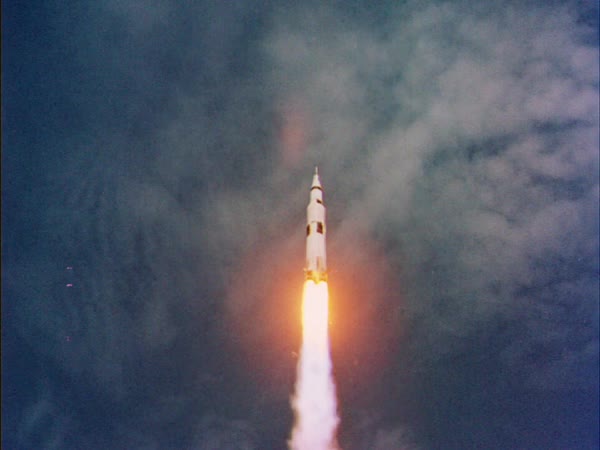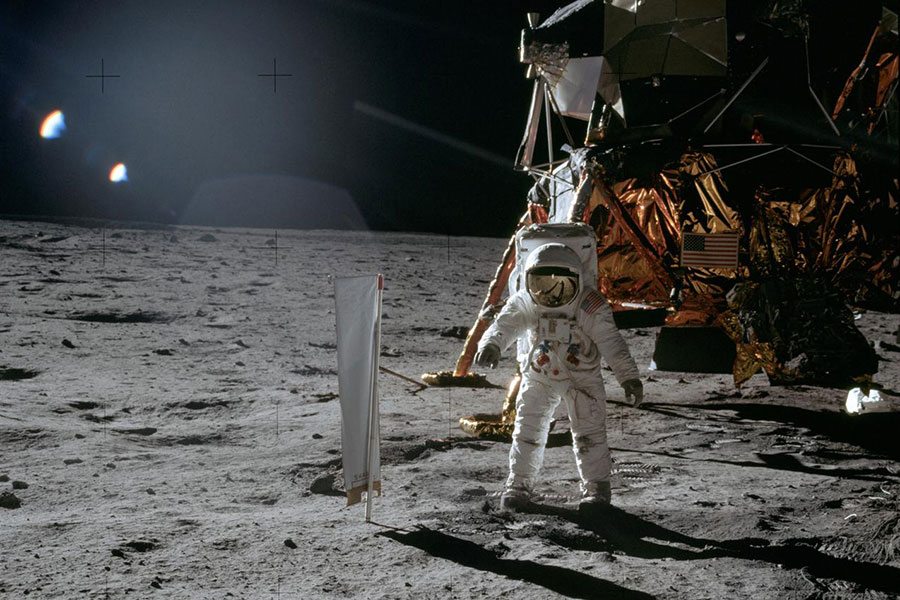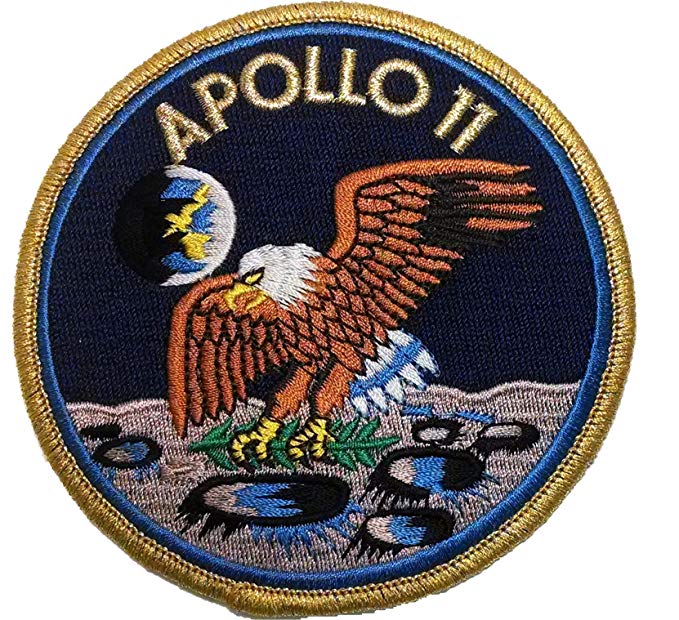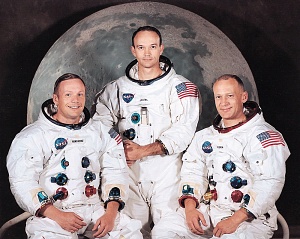I remember the coverage of the actual Moon landing which I watched on a television set in my dad's fishing camp.
From NASA:
"At about 150 metres (500 feet) above the surface, Armstrong began maneuvering the craft manually (although the main engine continued under automatic control) to avoid landing in a rock-strewn crater.,br>
"For about a minute and a half, Armstrong hovered Eagle, moving it laterally with the reaction control system until he found a clear area on which to descend. Then the contact light went on inside the cockpit, as the 172-cm (68-inch) probes dangling below Eagle’s footpads signaled contact with the ground. One second later the descent rocket engine was cut off, as the astronauts gazed down onto a sheet of lunar soil blown radially in all directions. Armstrong then radioed at 4:17 pm U.S. Eastern Daylight Time (EDT), “Houston, Tranquility Base here. The Eagle has landed.” Eagle had touched down in the Sea of Tranquility, an area selected for its level and smooth terrain."
That evening, I was by myself in the back room of my house on Lake McQueeney watching the coverage on a small black and white TV.
From NASA:
"At 10:56 pm EDT on July 20, Armstrong stepped out onto the lunar soil with the words, 'That’s one small step for [a] man, one giant leap for mankind.' (In the excitement of the moment, Armstrong skipped the 'a' in the statement that he had prepared.) He immediately described the surface as “fine and powdery” and said that there was no difficulty moving about. Aldrin joined his companion about 20 minutes later.
"During their moon walk of more than two hours, Armstrong and Aldrin set up a device to measure the composition of the solar wind reaching the Moon, a device to receive laser beams from astronomical observatories on Earth to determine the exact distance of the two bodies from one another, and a passive seismometer to measure moonquakes and meteor impacts long after the astronauts had returned home. They also took about 23 kg (50 pounds) of rock and soil samples, took many photographs, and maintained constant communication with mission control in Houston. After 21 hours 38 minutes on the Moon’s surface, the astronauts used Eagle’s ascent stage to launch it back into lunar orbit. After various maneuvers, Eagle once again docked with Collins in Columbia, and the trip back to Earth began soon afterward."
There are lessons to be learned from the Moon landing.
One was from the mother of my friend, James Bradfield, who at their house when I came over complained about "wasting money" on the space program. I looked at her life and shook my head. Yes, they were poor. But that's not the point. Without reaching for that which is difficult, we'll never get anywhere no matter how much money we do or do not have.
I didn't hear President Kennedy making his promise to reach the Moon at the time. I remember the recording of that speech many times. "We choose to go to the moon in this decade and do the other things, not because they are easy, but because they are hard, because that goal will serve to organize and measure the best of our energies and skills, because that challenge is one that we are willing to accept, one we are unwilling to postpone, and one which we intend to win, and the others, too."
He threw down the gaunlet of challenge. Challenge is what keeps us alive. Challenge is what keeps us going. Without challenge, we'd just be people content to live on hand outs and sit in our trailers and wait for the government to take care of us. Don't you think that's great? Yeah, right.
I believe Kennedy had a message for the American people then and that message still resounds today. We need to reach into ourselves and meet the challenge of life, whatever it is.
You can say we need another Kennedy to lead us. No, we don't need another Kennedy. We need for ourselves to stand up and reach for what we want and never give up.
In the words of another leader (albeit fictional), "Never give up, never surrender."
|

Saturn V launching Apollo 11

The Apollo 11 Moon landing
|



